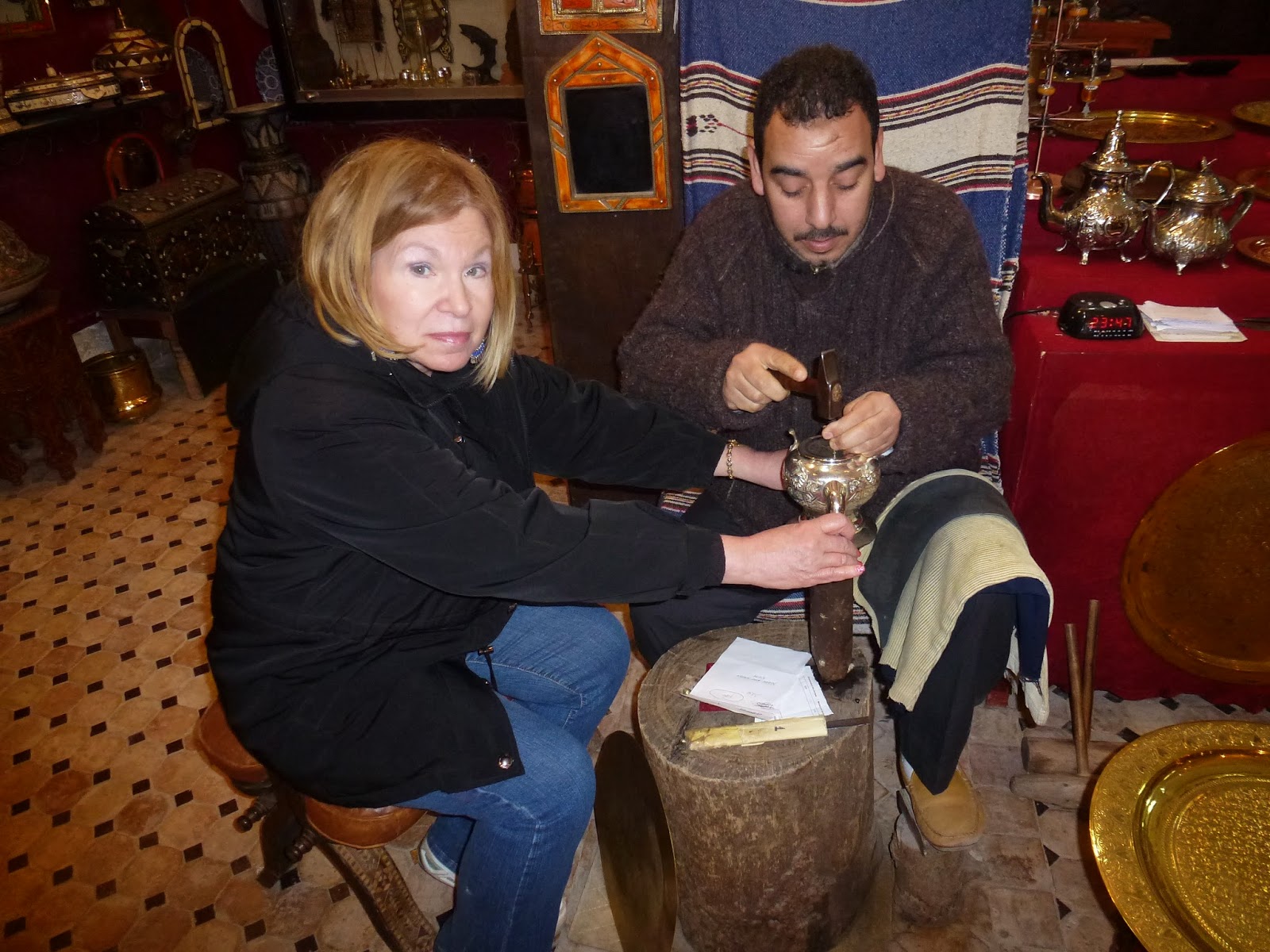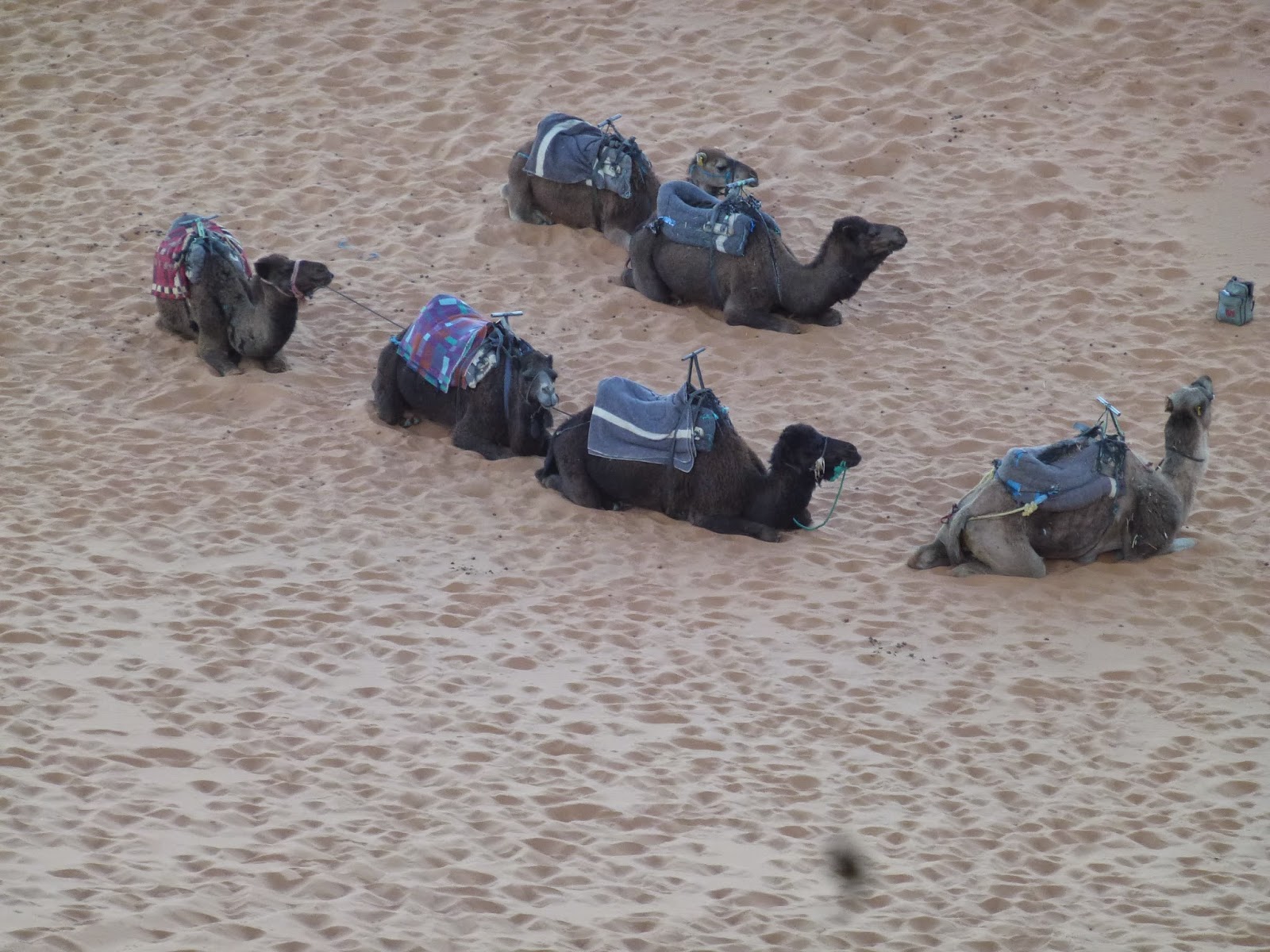Where we are on the
map: This town is in the Northeastern corner of Morocco, not far from
Tangier and across the Straits of Gibraltar(which connects the Mediterranean
Sea from the Atlantic Ocean) from Spain.
We are basically completing a circle tour of the country, having started
in Marrakech in the Southeast, then going west to the Atlas Mountains and the
Sahara desert, to the middle of the country at Fez and completing our tour in
Rabat and Casablanca tomorrow in the mideastern Atlantic coast part of
Morocco.
The countryside: Although
agriculture remains the major industry of Morocco, there has been a great exodus
from the rural areas to the villages and towns.
The reasons are universal: to
find work or to advance one’s children’s prospects for a better life. The move may also be the result of being one
of 8 children and knowing the land will not come to you in the future., The result is overcrowding of school in towns
and the need for split day sessions of school.
We saw the teenagers traipsing out of school at 11 am, having finished
their half day. It reminds me of when I
was in elementary school in Atlanta, Georgia in the 1950’s, and I was part of
the baby boom where we too had split day classes. I moved North to New Jersey in 4th
grade and realized how far behind I was because of those half days.
Having moved to the city does not mean you have left the
farm behind. Our guide is typical of
middle class people in Morocco who still have family land in rural areas. He has his orchard of olive and date trees,
orange and apples also. He goes there on
weekends to sit under the date trees and relax.
In the North we have moved from a desert climate to a
verdant one where there are endless olive trees, planted grains, and eucalyptus
trees. There are sellers of crates of
oranges on the roadside. In town we stop
at a café. The toilet is one of those
stand up stalls where you plant your feet and hope your aim is good. You sit with your small glass of mint
tea-boiled green tea with sprigs of fresh mint and a sugar cube. The tea is poured from a silver plated teapot
that is held 2 feet above the glass with perfect aim. The handle of the teapot is so hot it must be
held with a table napkin; so too is the glass.
You sip slowly as it is very hot and look at the crowds of people who
stare back at the foreigners rare in this village.
Cannabis: This
area gets the most rain in Morocco and the weather is perfect for cannabis to
grow naturally. In the 1960’s hippie
culture was well established here and had a high time. However, it remains illegal to grow and
harvest it. The prison terms are quite lengthy
if caught. However, we are told that bales
are transported at night on donkey to the nearby coast where they are taken to
Europe-especially Holland where it is legal.
Chefchaouen: This
is known as the “blue city” because of the colors of the houses. It is tucked in a mountain valley and very
picturesque. Here Jews came to escape
the civil war in Spain and the rise of Nazism in German in the 1930’s. As we
climb the hills we can see the Mediterranean in the distance.























































